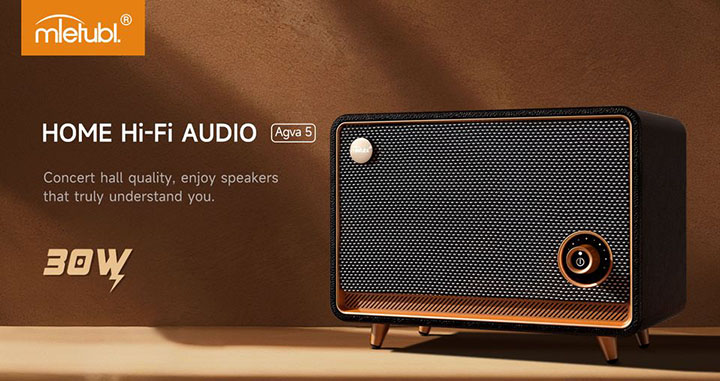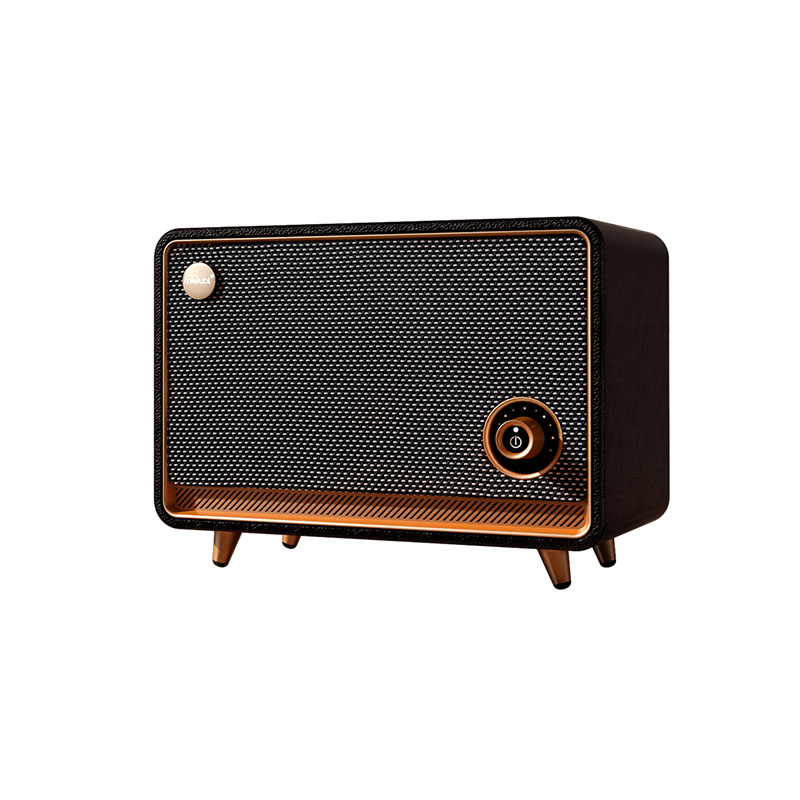What is Hi-Fi Aduio Quality?
Hi-Fi stands for "High Fidelity," referring to the high degree of accuracy in reproducing the original recording during audio playback. The core features of Hi-Fi sound include "authenticity," "detail," and "high fidelity," ensuring listeners experience music as if they were present at the original recording.
The Evolution of Hi-Fi Sound Quality
Hi-Fi was First introduced in the 1950s, the concept of Hi-Fi sound quality has evolved alongside advancements in audio technology.
Early Exploration (1930s–1940s):
In the 1930s, as the broadcasting and recording industries rapidly developed, attention began to focus on the issue of sound quality restoration. Early audio devices, such as phonographs and radios, were characterized by high distortion and coarse sound quality, falling short of the expectations of music enthusiasts.
In 1940, American engineers introduced more advanced vacuum tube amplifiers and speakers, significantly enhancing sound quality. It was during this time that the term "High Fidelity" was first coined.
Technological Advancements (1970s):
In the 1970s, transistor and integrated circuit technology replaced vacuum tubes, significantly reducing the cost and size of audio equipment while improving performance. This evolution also redefined the concept of High Fidelity.
The Digital Audio Era (1980s–1990s):
In the early 1980s, the CD made its debut, offering clearer digital audio and enhanced durability, quickly replacing vinyl records. CDs greatly reduced unwanted noise and became a key medium for Hi-Fi sound quality.
During the 1990s, the rapid development of digital audio technology led to the popularity of MP3 players. Although MP3 compression sacrificed sound quality, Hi-fi enthusiasts opted for lossless formats like WAV and FLAC to maintain high fidelity.
Modern Hi-Fi Definition (2014):
In 2014, the Consumer Electronics Association (CEA), The Recording Academy, and the Digital Entertainment Group jointly defined High-Fidelity audio. They described it as lossless audio, capable of reproducing all the sound details of music recordings created with master sources of higher quality than CDs.
Hi-Fi in the Modern Era:
By now, Hi-Fi sound has expanded from high-end sound systems to portable devices like Bluetooth headphones and wireless speakers. Wireless connectivity (Wi-Fi and Bluetooth) and smart technologies have made Hi-Fi sound more accessible and convenient.
| Year | Device/Technology | Features |
|---|---|---|
| 1953 | Marantz Amplifier | The first high-fidelity audio system |
| 1958 | Stereo Records | Provides a more authentic music experience |
| 1979 | Sony Walkman | The beginning of portable music devices |
| 1982 | CD (Compact Disc) | Launched the digital music era |
| 1990s | FLAC Lossless Format | The standard for high-fidelity digital audio |
| 2015 | Tidal Hi-fi | Streaming enters the Hi-fi domain |
| 2020 | WH-1000XM4 | A new benchmark for Bluetooth Hi-fi quality |
Hi-Fi Sound Quality vs. Regular Sound
The reason Hi-Fi sound quality can reveal more details than standard sound quality primarily stems from the following factors.
Audio Reproduction:
Hi-Fi audio systems preserve intricate details of the original recording. They typically use high-quality Digital-to-Analog Converters (DACs) and professional amplifiers to ensure signal integrity.
Frequency Response Range:
Hi-Fi systems have a broader frequency range, accurately reproducing lows, mid, and highs for richer details. Regular speakers have narrower ranges, limiting sound quality.
Low Distortion:
Hi-Fi systems minimize distortion through superior design and components, ensuring pure and clean sound. Regular speakers may introduce significant distortion due to cost constraints.
Power Output:
Hi-Fi systems often deliver higher power outputs, enabling them to maintain sound quality even in large spaces. Regular speakers generally lack such capabilities.
Connectivity:
Hi-Fi devices offer diverse input/output options, including analog, digital, and wireless interfaces, catering to various scenarios. Regular speakers usually provide basic connectivity.
Key Factors for Achieving Hi-Fi Sound Quality
The main features of the HI-FI audio system are its highly restored sound quality and excellent resolution. In order to achieve this goal, the HIFI audio system has strict technical requirements in many aspects:
High-Quality Audio Source:
The quality of the source determines the upper limit of Hi-Fi sound. Lossless formats (e.g., FLAC, WAV) retain all recording details, making them ideal for Hi-Fi systems. In contrast, lossy formats (e.g., MP3) compress data and sacrifice quality, especially in complex scenarios like symphonic performances.
High-Fidelity Signal Transmission:
Hi-Fi systems use low-distortion transmission methods, such as coaxial cables, optical fibers, or high-quality wireless protocols, to ensure signal stability and integrity.
Precise Audio Processing:
Advanced audio processors optimize signals to retain every detail, ensuring superior auditory experiences.
Premium Speakers and Amplifiers:
Hi-Fi speakers should have high sensitivity and low distortion, capable of reproducing subtle nuances and powerful dynamics. High-performance amplifiers provide stable and ample power to support the speakers.

MTB-BL05 home Hi-Fi Bluetooth speaker
Applications of Hi-Fi Sound Quality
Hi-Fi sound quality has a wide range of applications, spanning from home entertainment to professional recording, and even audio support in public venues. It essentially covers nearly all areas of music appreciation and audio production. Here are some of the key applications of Hi-Fi sound quality:
Home Theatres:
Hi-Fi speakers, combined with surround sound technology , provide immersive movie experiences by accurately reproducing explosions, dialogues, and soundtracks.
Recording and Music Production:
Hi-Fi sound is widely used in professional studios for monitoring and post-production. It captures every detail during live recordings, faithfully reproducing the ambiance of concerts.
Personal Portable Devices:
Hi-Fi-enabled portable devices allow users to enjoy high-resolution audio on the go, ideal for music enthusiasts, commuters, and travellers.
Commercial and Public Spaces:
Hi-Fi sound enhances the ambiance and brand image in high-end retail stores, cafés, bookshops, exhibitions, and product launches.The Rapid Growth of the Hi-Fi Market
Currently, the Hi-Fi market is experiencing rapid growth. As consumers continue to demand higher sound quality and digital technology becomes more widespread, an increasing number of audio equipment manufacturers are investing in the research and production of Hi-Fi products. The market now offers a wide variety of Hi-Fi products, ranging from entry-level to high-end professional options. Additionally, with the advancement of smart home and IoT technologies, Hi-Fi audio systems are also evolving towards smart and wireless solutions. For instance, many Hi-Fi speakers now support wireless connections such as Wi-Fi and Bluetooth, allowing users to enjoy high-quality music experiences anytime and anywhere.
Professionals in the audio industry rely on instruments to measure technical metrics for Hi-Fi systems, while enthusiasts often use subjective listening to assess whether equipment meets their expectations. The ultimate goal remains the same: authentic reproduction of music's purest emotions.

